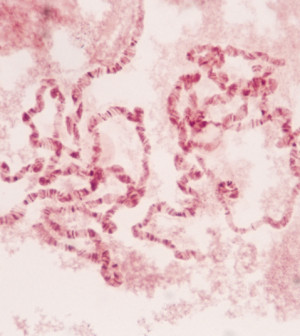- Skip Storing This Everyday Product in the Fridge Door
- Green Tea + B3 Pairing May Boost Brain Health
- Navigating Your Midlife Crisis: Embracing New Possibilities
- City Raccoons Showing Signs of Domestication
- Mapping the Exposome: Science Broadens Focus to Environmental Disease Triggers
- One Week Less on Social Media Linked to Better Mental Health
- Your Brain Changes in Stages as You Age, Study Finds
- Some Suicide Victims Show No Typical Warning Signs, Study Finds
- ByHeart Formula Faces Lawsuits After Babies Sickened With Botulism
- Switch to Vegan Diet Could Cut Your Greenhouse Gas Emissions in Half
What Not to Do for Migraines


Prescription pain medications should not be the first treatment for migraines. And doctors shouldn’t routinely order brain scans for patients with these debilitating headaches, according to new guidelines.
Taking a stand on common but often unnecessary or potentially risky tests and treatments for migraine, the American Headache Society published new recommendations in the November-December issue of the journal Headache.
“Our aim is to encourage doctors and patients to think carefully about medical care that can be harmful or unnecessary,” said Dr. Elizabeth Loder, president of the American Headache Society. “We didn’t approach this with cost uppermost in mind. The goal is to help address the problems of low-value care.”
Opioid painkillers, such as OxyContin and Vicodin, and the barbiturate butalbital pose serious long-term risks, the society said.
“The effectiveness of opioids is not the question,” explained Loder, chief of the division of headache and pain in the neurology department at Brigham and Women’s Hospital in Boston. “The problem is that even if they are effective in a single attack, for many people migraine is a chronic disorder that they will have for many decades.”
The risk of dependency associated with these drugs is evidenced by the growing epidemic of prescription painkiller abuse in the United States. Nearly three out of four prescription drug overdoses are caused by opioid painkillers, according to the U.S. Centers for Disease Control and Prevention.
“This ends up being a second problem patients have,” Loder noted.
Using too much of these pain medications can also lead to a condition called medication overuse headache, said another expert.
“There is a lot of research that opioids actually increase the sensitivity to pain in the head,” said Dr. Rebecca Erwin Wells, assistant professor of neurology at Wake Forest Baptist Medical Center in Winston-Salem, N.C. Medication overuse headaches are difficult to treat, Wells added.
In addition, the guidelines indicate that brain scan studies should not be performed on patients with stable headaches that meet criteria for migraine. And CT scans should not be used in a non-emergency situation as a diagnostic tool for headache patients when MRI is available.
“MRI can diagnose more conditions that may cause headache that CT scans can miss,” Loder explained.
Also, unlike CT scans, MRIs use powerful magnets and do not expose patients to radiation. “MRI is better value and safer,” Loder concluded.
The headache specialists also said that surgery targeting migraine trigger points is still experimental and not recommended outside of a clinical trial.
“We lack sufficient evidence to say the benefits of surgery outweigh the potential harms or that it is even helpful,” Loder cautioned. Before new drugs can be approved for use, they must go through rigorous testing that meets a certain standard, she noted, “and the standard for surgical interventions that are irreversible should not be lower.”
Finally, prolonged or frequent use of over-the-counter pain medications for headache is also unwise, the guidelines state. People shouldn’t take these drugs more than twice a week, noted Wells.
Loder agreed. “It’s not good for the kidneys, liver or stomach to be taking these medications on a daily basis,” Loder said. “There are a lot of strategies that can work that are better than just grabbing handfuls of Motrin.”
So what does work for most migraine sufferers? Triptans are a family of drugs used to stop migraines once they start, Loder said. And preventive therapies such as biofeedback can be used on a regular basis by people who experience frequent migraines, she added. Biofeedback is a technique that people can learn to use to help change how their body responds to physical symptoms.
Getting enough sleep and not skipping meals can also help keep migraine pain at bay, she suggested.
Migraine treatment and perceptions of the condition itself have changed dramatically over the years. Scientists now believe migraine has a genetic link and that the disorder involves brain chemistry and nerve pathways.
“We understand a lot more about different kinds of headache and have specific treatments that work,” Loder said.
It’s estimated that 12 percent of Americans get migraine headaches, three times as many women as men.
More information
The U.S. National Institute of Neurological Disorders and Stroke provides more information on migraine.
Source: HealthDay
Copyright © 2025 HealthDay. All rights reserved.










